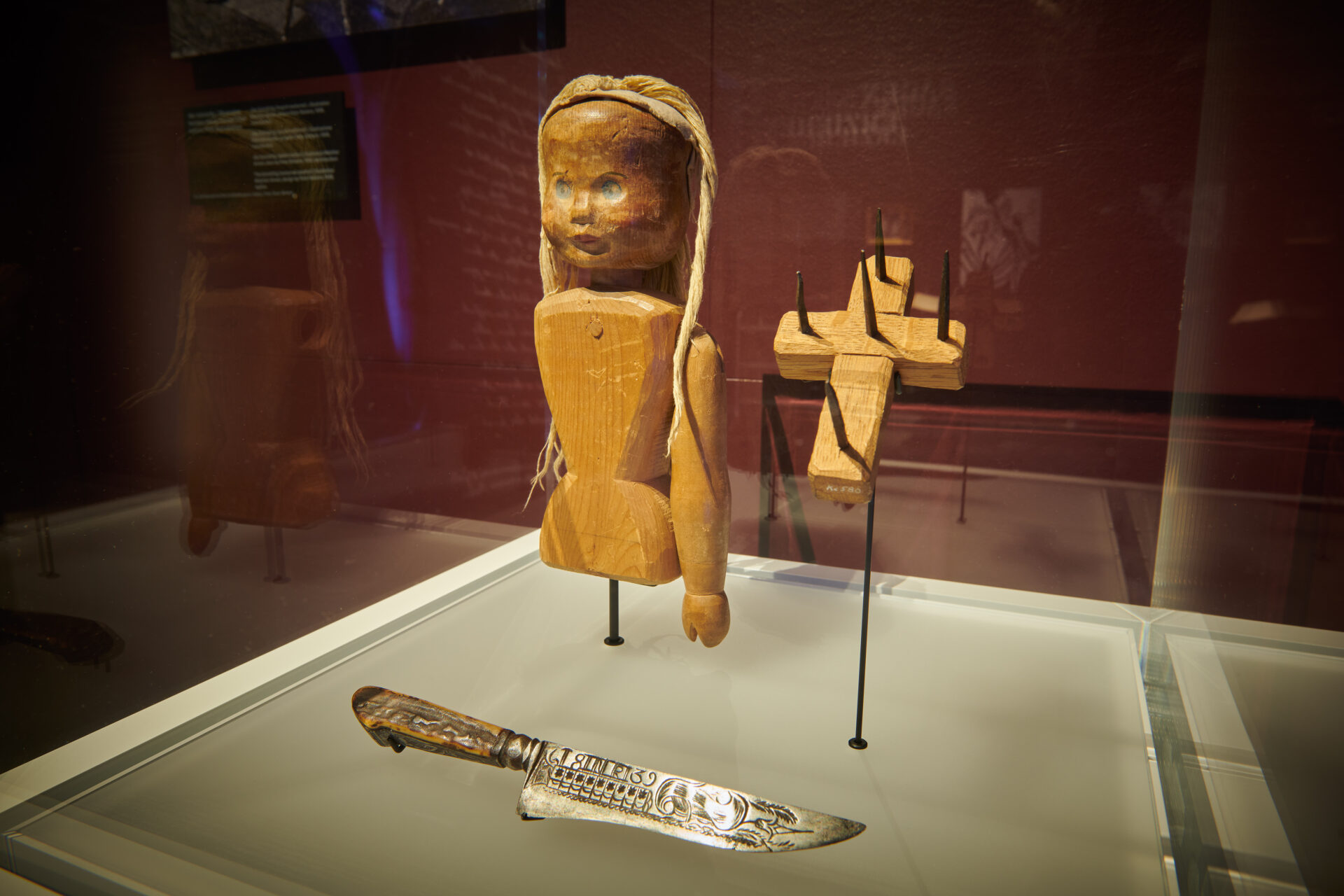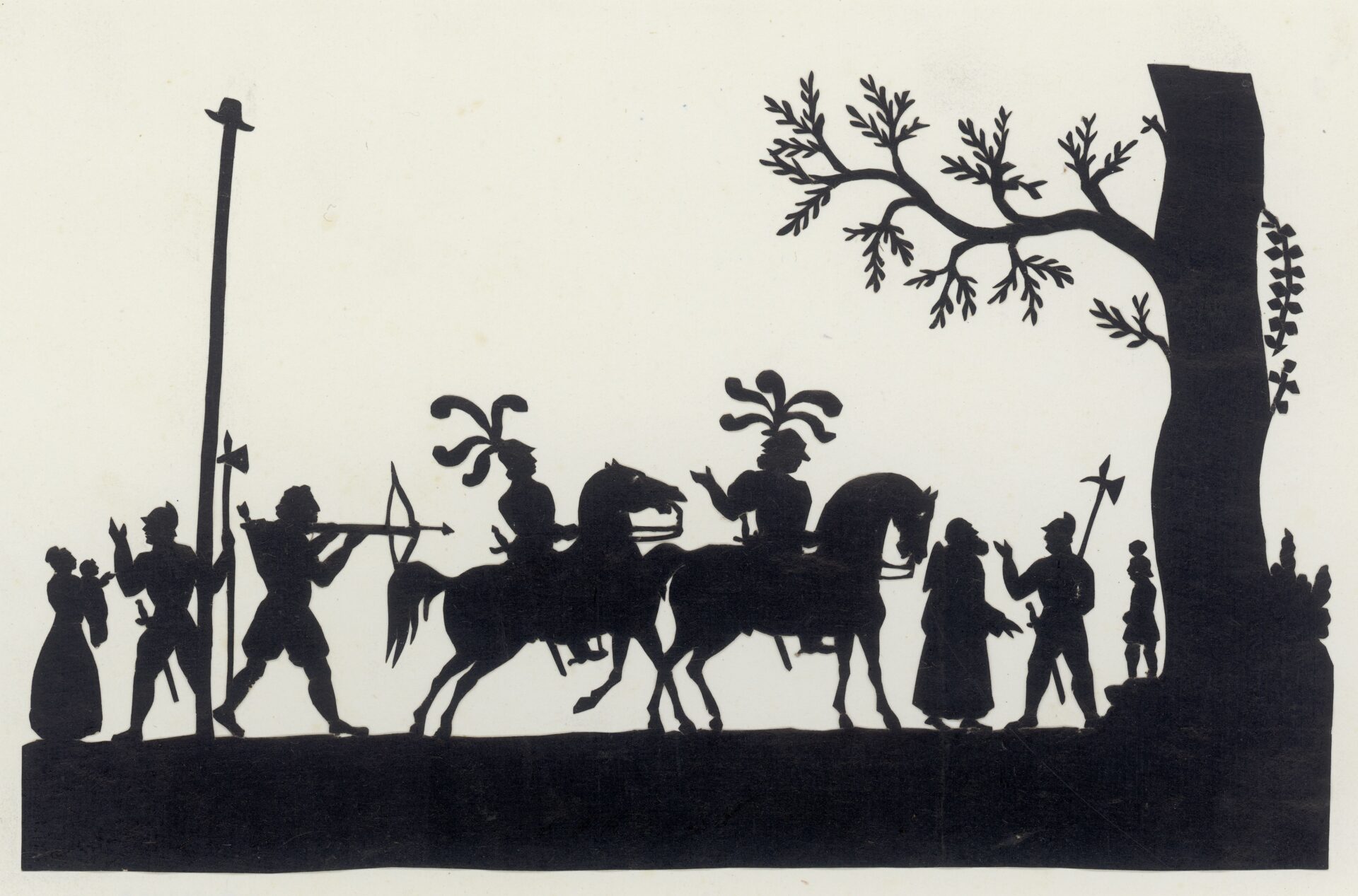Devil, witches and agents of the Good God have made an appointment in Zurich, in these winter nights, for new sarabands or fights between supernatural forces. Since December 16, 2022, the National City Museum has hosted an exhibition entitled Alpine legends. It depicts some fantastic stories that still haunt our Swiss Alps and which are also mixed with historical reality.
Told by the fireside, these often threatening, even terrifying stories were inspired by the climate and the particular topography of the place, and by the very harsh living conditions faced by our ancestors.
Straw doll coming to life, green pasture transformed into a stone desert, animal metamorphosis, demonic sabbath, flying woman… From the Bernese Blüemlisalp to the Valais Devil’s Bridge, the Alpine space is populated by creatures from tales or legends based on facts presumed or real in history. Long passed on by word of mouth, these stories have sometimes been put down on paper and “immortalized”. This is of course the case with that of William Tell, the most famous of Swiss heroes.
Tell, a hero of Scandinavian origin
This story, recalls the exhibition at the Landesmuseum Zürich, has its origins in Norse mythology. “He has become perfectly acclimated to the traditions of central Switzerland and has evolved over time into a true founding myth of Switzerland”, explains Alexander Rechsteiner, from Swiss National Museum.
It was Hans Schriber, Chancellor of Obwalden, who first put the legend of William Tell on paper, in the Sarnen White Paper, in 1470. “The strength of this legendary hero is such that he can play several roles: he carries us away in his rebellion against the sovereign, he makes us feel our own need for independence and he gives us the courage to resist. Subsequently, he was raised to the status of a national hero and his crossbow even became a quality label for Swiss products.”
Legendary punishments and real punishments
In 1707, in view of its edifying character, the Zurich physician and naturalist Johann Jakob Scheuchzer published, in Seltsamen Naturgeschichten of the Schweizer-Lands wochentliche Erzehlung (Strange natural stories from the Swiss country – weekly story), another legend presented in the exhibition. That of the Blüemlisalp. A vain cowherd, who lives in the abundance of a fertile mountain pasture, squanders nature’s gifts and refuses to share his wealth with the starving villagers of the valley. Worse, he makes fun of them. The Sky then takes care of his punishment: his mountain pasture is transformed into a desert of stone and ice.
These legends, alas, crossed reality more than once. How many women were persecuted for the crime of witchcraft, recalls the exhibition! Fueled by the witches hammer (1486) of the inquisitor Heinrich Kramer, the witch hunt found fertile ground in Switzerland. Many innocent people, mostly women, were accused of being the cause of ailments or illnesses affecting their fellow human beings and sentenced to terrible sentences by the local courts.

Graubünden, at the forefront of the witch hunt
With more than 500 documented trials, Graubünden is one of the regions in Europe most affected by the witch hunt. “A virulence which is explained in particular by the absence of common jurisdiction, in a confederation with distended links”, can we read in the magazine of the Swiss National Museum of April 2022. “The character of the witch illustrates the influence that legend and reality exert on each other. One can indeed easily assume that the stories reported at the time led to the runaway trials and convictions. Conversely, these events have certainly given rise to ever more legends. (cath.ch/com/lb)
Unusual objects and old editions
The exhibition Alpine legends occupies two rooms of the Swiss National Museum in Zurich. Work of art representing a forest and recomposition of a mountain hut are part of the scenography. You can discover books and parchments from various museums and libraries in the country or from private collectors, but also unusual objects. The imaginary world of legends is indeed reflected in the objects intended to protect against threats. A cross is often enough to drive away evil. Amulets, medals and plaques of blessing protect against demonic influence, evil spells, evil arts, diseases and many other dangers.
Curator responsible for the exhibition: Daniela Schwab
Until April 23, 2023, at the Landesmuseum Zürich. LB

© Catholic Media Center Cath-Info, 15.12.2022
The rights to all content on this site are registered with Cath-Info. Any distribution of text, sound or image on any medium whatsoever is chargeable. Registration in other databases is prohibited.
We want to thank the writer of this write-up for this incredible web content
Heroes and witches haunt the Swiss National Museum – Swiss Catholic Portal
Find here our social media profiles , as well as other related pageshttps://nimblespirit.com/related-pages/

